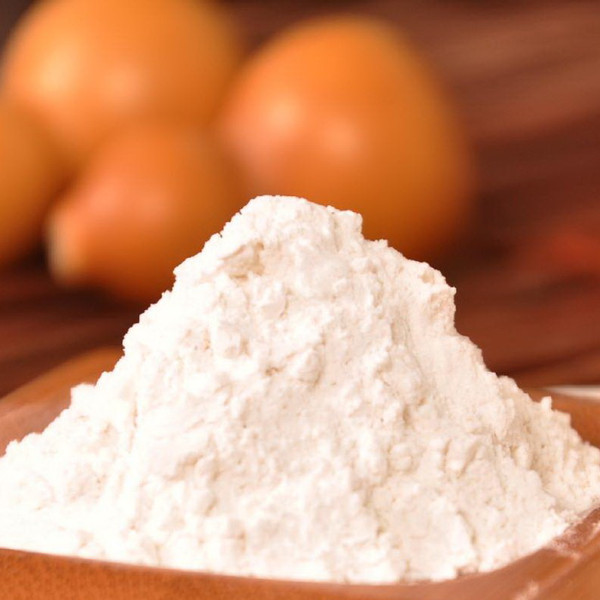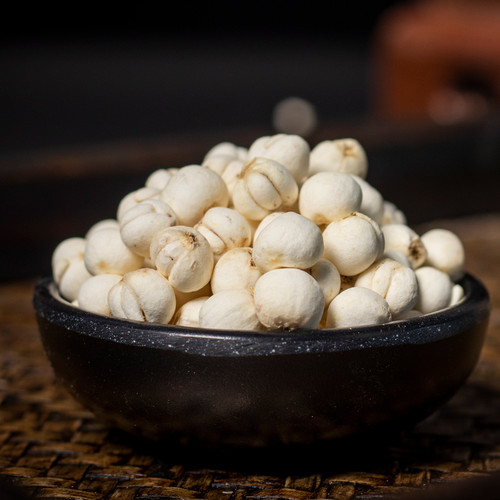Product Overview
Parts used: Dried bulb
TCM category: Cool herbs that transform Phlegm and stop Cough
TCM nature: Cool
TCM taste(s): BitterSweet
Meridian affinity: Heart Lung
Scientific name: Fritillaria cirrhosa or Fritillaria przewalskii
Other names: Yellow Himalayan fritillary, Tendrilleaf Fritillary
Use of fritillary bulbs (Chuan Bei Mu) in TCM
Please note that you should never self-prescribe TCM ingredients. A TCM ingredient is almost never eaten on its own but as part of a formula containing several ingredients that act together. Please consult a professional TCM practitionner, they will be best able to guide you.
Preparation: After harvest remove the roots and rough skin around the bulb, remove the impurities and dry at low temperatures.
Dosage: 3 - 9 grams
Main actions according to TCM*: Clears Hot Phlegm and stops cough. Clears Lung Heat caused by Yin Deficiency. Clears Heat and reduces hard lumps and swellings.
Primary conditions or symptoms for which fritillary bulbs may be prescribed by TCM doctors*: Dry cough Bloody sputum Phlegm Scrofula Lung abscess Mastitis Asthma
Contraindications*: This herb should not be used by those with Cold Damp Phlegm conditions
Common TCM formulas in which fritillary bulbs are used*:
For urinary infections during pregnancy combine fritillary bulbs with sophora roots (Ku Shen) and dong quai (Dang Gui).
For Lung and Kidney Yin Deficiency associated with chronic bronchitis, asthma or chronic pharyngitis combine fritillary bulbs with lily bulbs (Bai He), prepared rehmannia (Shu Di huang), unprepared rehmannia (Di Huang), dwarf lilyturf roots (Mai Dong), white peony roots (Bai Shao), dong quai (Dang Gui), ningpo figwort roots (Xuan Shen), platycodon roots (Jie Geng) and liquorice (Gan Cao).
For treating goiter, swollen and inflamed lymph glands and to soften hard nodules combine fritillary bulbs with kombu (Kun Bu), sargassum (Hai Zao) and ningpo figwort roots (Xuan Shen).
For Lung abscess and tobacco toxicity combine fritillary bulbs with houttuynia (Yu Xing Cao) and job's tears (Yi Yi Ren).
For blood streaked sputum from the Lungs combine fritillary bulbs with cordyceps (Dong Chong Xia Cao) and glehnia roots (Bei Sha Shen).
For glandular swellings or cervical or occipital lymphatic swelling combine fritillary bulbs with oyster shells (Mu Li ke), ningpo figwort roots (Xuan Shen) and heal-all spikes (Xia Ku Cao).
For swollen glands combine fritillary bulbs with honeycomb (Feng Fang), frankincense (Ru Xiang), forsythia fruits (Lian Qiao) and heal-all spikes (Xia Ku Cao).
Key TCM concepts behind fritillary bulbs (Chuan Bei Mu)'s properties
In Traditional Chinese Medicine (TCM), fritillary bulbs are plants that belong to the 'Cool herbs that transform Phlegm and stop Cough' category. In TCM Phlegm is a condition of Stagnation of Fluids which tends to start in the Spleen and then goes to the Lungs. If this overly accumulates it thickens and becomes pathological Phlegm. Phlegm, being a form of Stagnation, often starts as being Cool and transforms to Hot as the condition progresses. The herbs in this category are Cold in nature so they treat the later stages of the Stagnation: Hot and Dry-Phlegm with symptoms such as cough, goiter or scrofula.
As suggested by its category fritillary bulbs are plants that are Cool in nature. This means that fritillary bulbs tend to help people who have too much "heat" in their body, although with less effect than a plant that would be Cold in nature. Balance between Yin and Yang is a key health concept in TCM. Those who have too much heat in their body are said to either have a Yang excess (because Yang is Hot in nature) or a Yin deficiency (Yin is Cold in Nature). Depending on your condition fritillary bulbs can help restore a harmonious balance between Yin and Yang.
Fritillary bulbs also taste Bitter and Sweet. The so-called "five elements" theory in Chinese Medicine states that the taste of TCM ingredients is a key determinant of their action in the body. Bitter ingredients like fritillary bulbs tend to have a cleansing action on the body by clearing heat, drying dampness and promoting elimination via urination or bowel movements. On the other hand Sweet ingredients tend to slow down acute reactions and detoxify the body. They also have a tonic effect because they replenish Qi and Blood.
The tastes of ingredients in TCM also determine what organs and meridians they target. As such fritillary bulbs are thought to target the Heart and the Lung. In addition to regulating blood flow, in TCM the Heart is believed to be the store of the "spirit" which basically refers to someone's vitality. In addition to performing respiration, the Lungs are thought to be a key part of the production chain for Qi and the body fluids that nourish the body.






